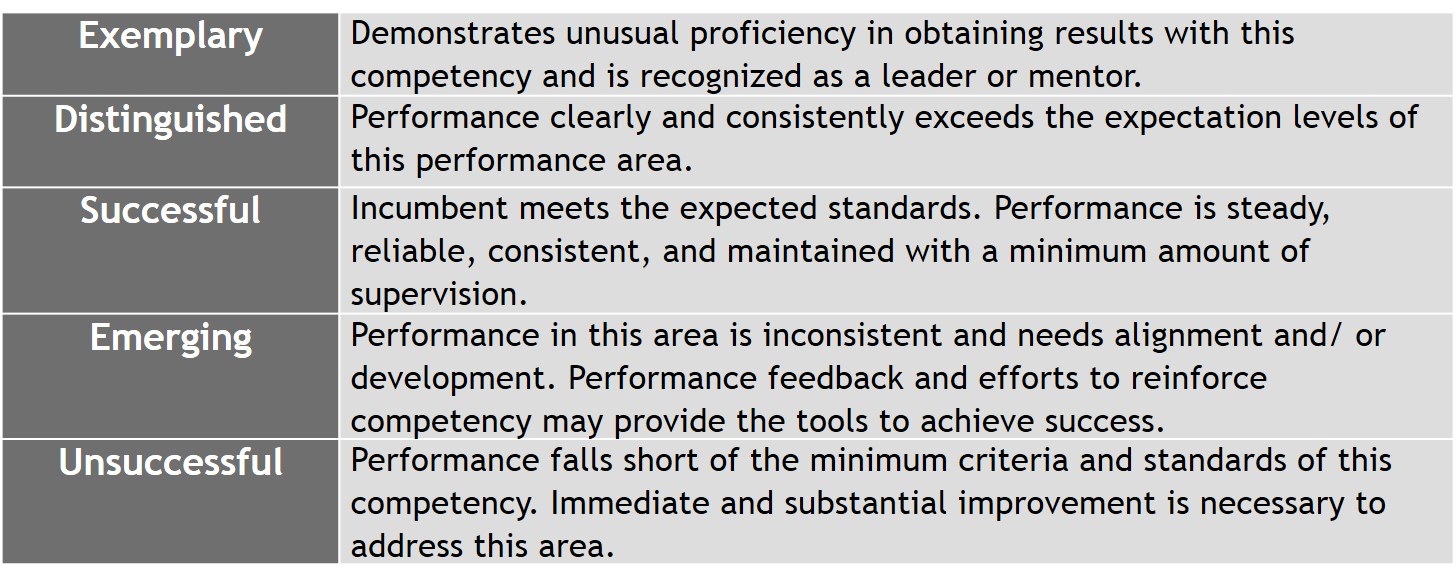Concepts and Definitions
Performance Management - Definition
Performance management is an ongoing process of communication between a supervisor and an employee that occurs throughout the year, in support of accomplishing the strategic objectives of the organization. The communication process includes clarifying expectations, setting objectives, identifying goals, providing feedback, and reviewing results.
Managing Employee Performance – The Cycle
Overseeing performance and providing feedback is not an isolated event, focused in an annual performance review. It is an ongoing process that takes place throughout the year. The Performance Management process is a cycle, with discussions varying year-to-year based on changing objectives.
The cycle includes Planning, Checking-In, and Review.
- To begin the planning process, you and your employee review overall expectations, which includes collaborating on the development of performance goals. Individual development goals are also updated. You then develop a work plan that directs the employee's efforts toward achieving specific results to support organizational excellence and employee success.
- Goals and objectives are discussed throughout the year, during check-in meetings. This provides a framework to ensure employees achieve results through coaching and mutual feedback.
- At the end of the performance period, you review the employee's performance against expected goals and performance standards. Together, you establish new goals for the next performance period.
Process & Timeline
|
Position Type |
Plan |
Check-in |
Review |
|
New Staff Hire |
Within 30 days of hire |
3 months |
6 months |
|
Regular Staff |
October/November |
November/December |
February/March |
|
Part-time Staff |
October/November |
November/December |
February/March |
|
Athletic Staff |
October/November |
October-February |
May/June |
|
Rehired Retiree |
Not applicable |
Not applicable |
Not applicable |
Core Competencies
Competencies are attributes, knowledge, skills, abilities, and other characteristics that contribute to individual success in the organization; they focus on “how” things get done. Competencies help drive individual and organizational performance. As part of the performance management process all employees are evaluated on five core competencies: Delivering Results, Agility, Collaboration, Communication and Service Excellence.
These core competencies have been identified as critical for all levels of employees to demonstrate on a consistent basis for individual and organizational success.
Leadership Competencies
Two additional competencies have been identified as critical for exempt-level employees in leadership roles. These include: Strategy, and Talent Management.
Performance Levels
The following levels of performance have been defined for attainment of performance goals, competencies, and job duties.

Behavioral Indicators
This document provides behavioral anchors (examples) of the competencies:
- Behavioral examples of the competencies are provided using the University’s 5-point performance rating scale.
- These are examples of what behaviors could look like and are not inclusive of all behaviors that demonstrate each level of performance for the competency. Rather, this is a tool to help guide evaluations of employee performance and should not be used as a checklist for employees’ behaviors.
- Use this tool to help form an image of employee performance compared to the University’s expectation.
Definitions
Use this link to download a terminology handout.
- 229.333.5709
- 229.259.5030
-
Campus Address
University Center Bldg III
1205 N. Patterson Valdosta, GA 31698 -
Mailing Address
1500 N. Patterson St.
Valdosta, GA 31698